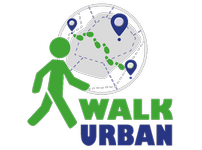Project WalkUrban
How walkable are our cities? How can we develop methods to evaluate the user perspective of walkability? WalkUrban explores walkability in three European cities, Gothenburg, Genoa, and Dortmund.

How walkable are our cities? How can we develop methods to evaluate the user perspective of walkability? WalkUrban explores walkability in three European cities, Gothenburg, Genoa, and Dortmund.
Research on day-to-day travel and mobility from the user perspective has not previously been prioritized within the EU. The WalkUrban project main aim is to investigate and understand how more walkable cities can be created in order to promote sustainable and active travel. Psychological, geographical, policy- and planning perspectives are included in the research which explores possibilities and barriers for walking in differens urban environments.
We compare walking conditions and experiences within and between the three cities using a mixed methods approach. On top of the general population, we also focus on a number of target groups, for example:
By studying objective, subjective and percieved walkability we identify proomotors and barriers for walking as well as walking in combination with public transport.
The project aims at developing guidelines for promoting walking as a mode of transport for a diverse population in the city. By studying (percieved) conditions for walking in the three European cities, as well as prerequisites for, and experience of, different target groups we will create knowledge based on the users own perspectives. This knowledge will inform practical guidelines in collaboration with local stakeholders.
The project aims at developing guidelines for:
Walkable neighbourhoods – freeing up potential for sustainable and active travel by promoting walking as a mode of transport.

Full name: Walkable Urban Neighbourhoods – Freeing up Potential for Sustainable and Active Travel by Improving Walking and its Connections with Public Transport.
Project coordinator Sweden: Katrin Lättman, University of Gävle
Project coordinator (consortium): Noriko Otsuka, ILS, Germany
Project menbers: Edward Prichard, University of Gävle; Jonas De Vos, UCL; Janina Welch, ILS, Anna-Lena Van der Vlugt, ILS, Paola Debandi, Genoa municipality and more
Duration of project: June 2021– May 2024
Funders: Energimyndigheten, Formas, Vinnova (a project within JPI Europe: ENUAC EraNet Urban Accessibility and Connectivity)
Want to read more about the project?
Read more at walkurban.eu

Email: katrin.lattman@hig.se
Telephone: +46 70 889 81 06